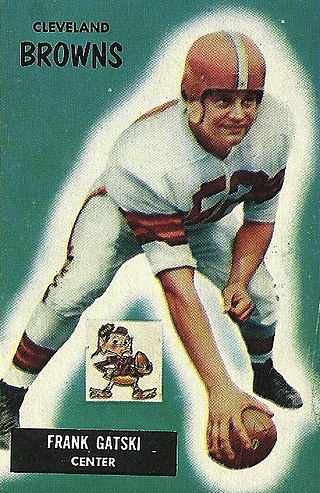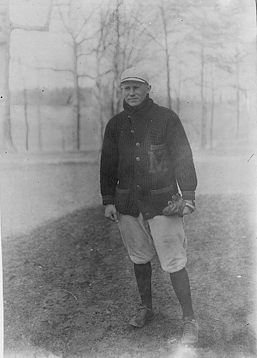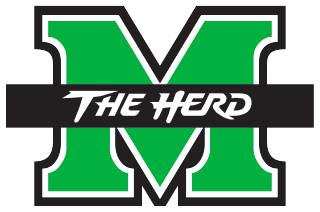Marshall
Henderson assumed a position at Marshall College, now Marshall University, in 1935, after Marshall had hired Dr. John Allen from D&E to be President of Marshall. Henderson was hired as athletic director and head coach for basketball and football. Henderson would win 68 football games and one Buckeye Conference title (a 9–0–1 season in 1937). He sent the Thundering Herd to the 1948 Tangerine Bowl and he produced College Football Hall of Fame running back Jackie Hunt, who set the national scoring mark with 27 touchdowns in 1940. His basketball teams won 368 games and won the Buckeye Conference in 1936–37, 1937–38 and 1938–39, the final year for the league. He won 35 straight home games from 1944 to 1947, started the 1946–47 season 17–0, then went on to a 32–5 mark and Marshall's only national championship in basketball in the NAIB (today's NAIA) Basketball Tournament in Kansas City, Missouri. Henderson also sent teams to the 1938 and 1948 tournament. His 1947–48 team won the Helms Foundation's Los Angeles Invitational by defeating Syracuse, 46–44.
Henderson's first All-Americans were Bill Smith for football (1937) and Jule Rivlin for basketball (1940). He sent numerous players to the professional ranks, including Frank "Gunner" Gatski (Marshall 1940–42), who is the first of the Herd's two members of the Pro Football Hall of Fame in Canton, Ohio. Gatski went on to play in 11 title games in 12 seasons with the Cleveland Browns (1946–56) and Detroit Lions (1957), winning four All-American Football Conference and three NFL titles with the Browns and one NFL title with the Lions. Henderson also recruited the first African-American to play at the formerly all-white colleges of West Virginia when he signed Hal Greer from Huntington in 1954. Greer helped Marshall to the Mid-American Conference (MAC) title in 1955–56, then led the nation in scoring in 1957–58 with 88 points per game. Greer signed with the Syracuse Nationals of the NBA, but went on to greatest glory with the Philadelphia 76ers by winning the title in 1966–67 and becoming a multi-year All-Star and MVP of the 1968 All-Star game. Greer, named as one of the top 50 players in the NBA 50th Anniversary, averaged 19 points per game (1,122 games played), five rebounds and four assists and was inducted into the Naismith Basketball Hall of Fame in 1982.
Marshall had three basketball wins over Tennessee and Colorado during Henderson's tenure. They beat the Dayton Flyers 17 times and topped teams like BYU, South Carolina, Cincinnati, Long Island, St. Francis, St. Louis, Loyola, Virginia Tech, Cal, Louisville, Denver, Wichita State, Miami-Florida, City College of New York, Xavier, Indiana State, Maryland, Murray State, Western Kentucky, Kansas State, Creighton, Hawaii, Washington, Idaho, Evansville, Pepperdine, Texas A&M, Memphis (State), Southern Miss and Virginia. Over 20 seasons they had only one losing campaign, going 6–10 in Henderson's first year. His teams won as many as 32 games and they won 20 or more games eight times. He produced the first-ever first round draft pick for the NBA, Andy Tonkovich, and produced All-Americans like Walt Walowac (two-times on Helms Foundation Teams, first in 1953, third in 1954 and scored 1,982 career points). NAIB All-Americans in 1947 and 1948 included Gene James, who played in the NBA, Bill Hall, Bill Toothman, Marvin Gutshall and Tonkovich. Rivlin was on the AP Little All-American team in 1940. Charlie Slack set a still-standing NCAA record of 25.4 rebounds per game for Henderson's final team in 1954–55, and finished his career with 1,916 rebounds and 1,551 points in four seasons. Slack and Walowac played for the Goodyear Winged Foots of Akron, Ohio, in national and international AAU contests, and Slack was an alternate for the 1960 Olympic team.
After a 6–4 season in 1949, Director of Athletics Luther Poling asked Henderson to resign his football position. Henderson would remain at Marshall as head basketball coach until 1955. His championship basketball team of 1947 spurred the move into the new Cabell County Veteran's Memorial Field House, a 6,500-seat arena that was Marshall's home from 1950 to 1980. His final team in 1954–55 was 18–4, but the MAC prevented Marshall from accepting an invitation to the National Invitational Tournament. Henderson's failing health from diabetes forced him to step down after the season and he would die that summer.











